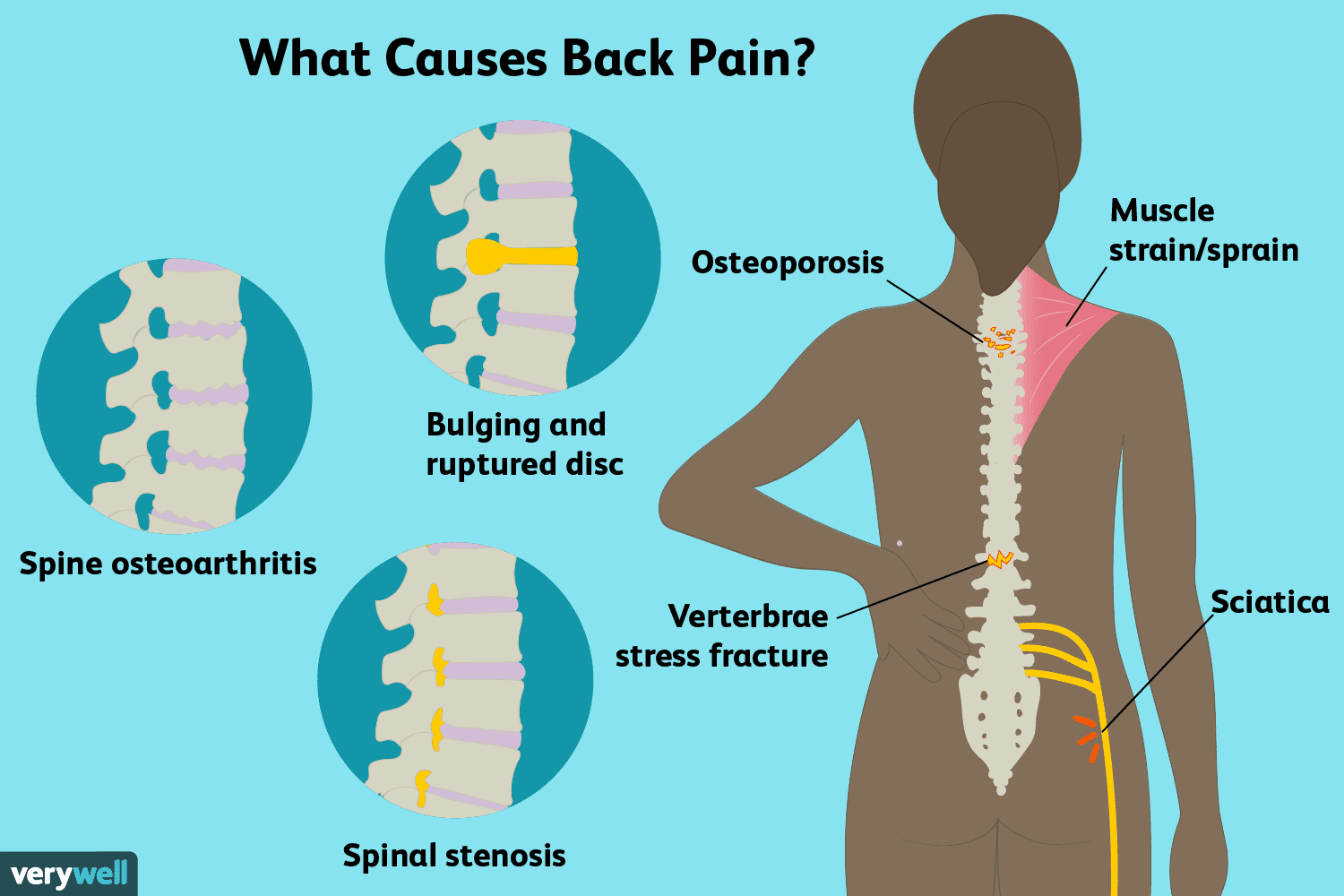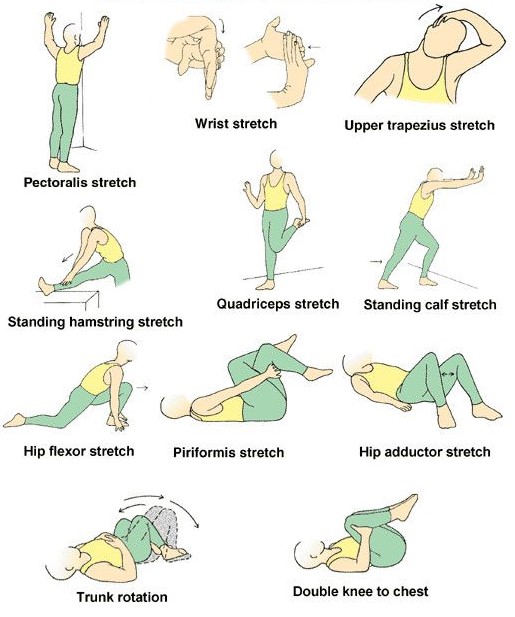Sore Back Remedies
Back pain is the most frequent of bodily aches that we, as a human race, experience. We don’t always know what’s causing it but it’s there, like it or not. However, as you progress in life and the age count begins to increase, the likelihood of a sore back becomes larger. This can present a whole lot of issues regarding overall health, wellbeing, and quality of life.
Nobody wants to spend 60% of their life in pain — be it mild or severe. Fortunately, a sore back can be remedied back into good health with a few exercises, stretches, and lifestyle changes!
It’s important to bear in mind that not all back pain is the same. Some pain could be caused by sleeping on a wonky bed, or perhaps you’ve had an injury some years ago. If it’s the latter, you’re better off seeing a physician first before trying to remedy yourself back to health. A physical therapist would be a good starting point too.

Necessary Action to Remedy a Sore Back
If you’re living your day-to-day life with a hurting posterior chain, then you need to take the necessary steps toward a healthier lifestyle. These can include following a few key points that we’ll include below and/or going through some physical or chiropractic therapy. It never hurts to see a qualified medical professional.
With that in mind, below are a few ways to improve your health and reduce both the pain and symptoms of a sore back.
1. Ice It
In the instance where you’re performing a daily activity or task and suddenly you experience acute back pain, you will want to ice it. By doing so, you’ll reduce the inflammation which will eventually cause the problem to heal up. It’s advised to ice the area for approximately 20 minutes. Doing so will give your skin a chance to rest.
Repeat the process throughout the day. If the pain still persists 48 hours later, then it’s time to see the doctor.
Ultimate Back Pain Relief Kit
2. Exercise Your Core

Core strength and stability is vital for overall bodily health and physical function. It’s actually quite shocking what injuries a person could pick up just by having a weak core. Strong abs play an important part in supporting the lower back. Modern, everyday lifestyles have caused humans to use less of their abs than what civilizations before us used to.
We spend a great deal of our day in a seated position. This requires little to no activation from our abdominals. Instead, we’re more likely to sit with a slouch, causing unnecessary stress to be applied to our spines, and in turn, aggravate any existing back pain.
The king of all ab-strengthening exercises is planking.
By performing planks three times a week will be sufficient to build up your core strength.
Sample core workout:
- Planking – 3 sets, 30-second hold, 30-second rest
- Bridging – 3 sets, 10 reps
- Side Planks – 3 sets, 15-second hold, 30-second rest
3. Perform a Full-Body Stretch Routine
Stretching can work wonders for your overall physical wellbeing and increase your general mobility and flexibility. Stretches are most typically performed before and/or after training of any sort. However, performing a good stretch routine first thing in the morning will help set your body up for postural success throughout the course of the day.
Apart from providing your overall posture with a boost, starting your day off with a stretch will also clear your mind and give you a positive mental attitude.
Below is a simple stretch routine to get the ball rolling:

While performing a stretch routine every morning will set you the right path, it’s important to note that you should try and stretch a little at least once an hour if you spend most of your day sitting.
4. Check Your Posture

Having bad posture can negatively affect the health of your back and overall wellbeing. As mentioned earlier, we tend to spend most of our daily lives in a seated position. Without maintaining good posture while sitting, we’re allowing our heads to drop which puts an awful amount of strain on our neck muscles (trapezius muscles).
In the same instance, we unconsciously allow our shoulders to droop forward, causing us to slouch and increase undue tensions on our vertebrae. This causes a big pain in the back!
Tips for better posture:
- When sitting down, push your buttocks all the way back into your seat, hold your head high, and push your shoulders back. This may be uncomfortable at first, but that is only because you’re not used to sitting with proper posture.
- When bending over, bend at the knees first while keeping your back as straight as possible. Never bend over with your back. Always go down with your knees first.
- If you’re reading a book or looking at your phone, try raising it higher so that you don’t look down with your head, causing tension on your neck and upper back.
5. Hit the Weights

Although we don’t recommend that you perform resistance training with a sore back, we do, however, suggest it as a preventative measure. By strengthening the muscles of the back, you’re essentially taking out an insurance policy to prevent any possible future pain.
Exercises that strengthen the extensor muscles will also help to maintain and correct your posture.
Exercises for strength and posture:
- Hyperextensions
- Good Mornings
- Underhand pulldowns
- Hanging kickbacks
- Chin-tucks
6. Check Your Weight
Believe it or not, but being overweight can cause problems to arise in your back. Being at an unhealthy weight can strain on your spine, which just adds to a list of problems. Other benefits of losing weight can be an increase in energy and improved hormone production.
7. Medication
This should definitely not be your go-to solution for back pain. However, if you do require a mild pain pill, something with paracetamol or ibuprofen would be suggested.
There are companies that sell pills that contain both paracetamol and ibuprofen. Paracetamol is typically used to treat pain, while ibuprofen is an anti-inflammatory ingredient.
8. Be Mindful of How You Sleep

You’ll be surprised at the effect that sleeping can have on your back. Sleeping in awkward or funky positions can leave you starting your day off quite high on the pain scale.
If you are suffering from lower back pain, sleeping in a fetal position on either of your sides could help to alleviate the pain as well as reduce the amount of pain you wake up in. By simply placing a pillow between your knees (or legs) is enough to alleviate any stress you have on your lower back. Though, the pillow trick only works if you’re laying on your side.
In addition, the level of firmness of your mattress plays an important role. If it’s too soft, you’ll risk sleeping with your spine in a curved position. On the other hand, if you buy a mattress that is too firm, you could become uncomfortable in the long run. Although, I’ve found that sleeping on a firm mattress is only uncomfortable for the first week or so.
9. Adjust Your Workspace
This one ties in with the point made on posture. This point rings true for more than just those working office jobs. The bottom line is if your workspace is too low, it’s going to cause undue strain on your spine.
It’s important that you keep key objects (objects that you frequently use) in relative closeness. You don’t want to stretch an lean over your desk to grab your stapler or tool. If it’s something that you have to use every couple of minutes or a couple of times an hour, it’s best that you keep it at arm’s length.
Other things to consider is the type of chair you are using and the height at which you view your monitor. Ideally, you would want to sit in your chair where your knees are in-line with your hips while your feet are flat on the floor. The back support of the chair should also offer full back support. If not, it would be wise to purchase a lumbar cushion or just simply place a rolled-up towel in the lumbar area.
10. Manage or Reduce Stress
A little-known fact about stress can trigger spasms and tension, especially in the neck and shoulders which eventually spreads to the back. In some cases, a person’s back can completely seize up. There are a few ways to manage stress and fight the symptoms to avoid a sore back:
- Deep Breathing: The most common of all stress reducers. A simple 5-minute, deep breathing exercise can immediately reduce stress. Try the following: 1) Sit in a comfortable position. 2) Breathe in through your nose while counting to five (in your head, of course). 3) Breathe out through your nose while counting to five. 4) Repeat this exercise 5-10 times.
- Guided Imagery: This practice involves clearing your mind by thinking about specific mental images that you find relaxing.
- Yoga: Yoga has been used as an effective stress reliever for the past few decades. It may be slightly challenging at first but once you get into the swing of it, it’s relaxation benefits begin to kick in.
At the end of the day, it is important to take care of your health. After all, you only have one body. If a pain of any kind persists, it is highly recommended that you visit your doctor in order to obtain a professional and medical diagnosis.




